As we winterize our landscape and garden, I make a point to have my girls help me collect seeds. This hands-on activity gives them a real-life experience that ties them to the complete cycle of plant life. Nature regenerates itself in anticipation of the spring to come.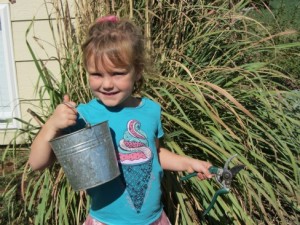
My fourth grader is currently studying the kingdoms of life in science. Her class is learning words like cell, epidermis, germination, organism, reproduction, seeds, spores, offspring, and chlorophyll. Because of her involvement in our yard and garden, she has been able to understand these concepts with a real life application.
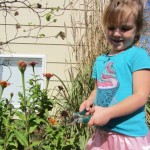
Whether it is for a science lesson or for saving money, seed collection is a relatively easy and quick activity that can be done with your kids. Year after year, we harvest and save our zinnia seeds. They are an easy seed for my six little helper’s hands to grasp and work with.
- Walk around the yard with your kids. Talk about the different seeds that are all around them. Identify the flowers they like and discuss why or why not they are good plants to collect seeds from. Plants that are diseased or from a hybrid are not worth saving. Diseased plants will most likely not germinate, and hybrid seeds will not look like the parent plant.
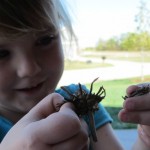
- Talk to your kids about the right time to collect seeds. Let these flowers go to seed and let them dry out as much as possible on the plant. However, you have to be sure to harvest them before the birds get them, or frost damages them.
- Send the kids to get some tools. You will need pruners or scissors to cut the pod from the plant and a container to put the seeds in. We use a bucket to store our seeds. If you are collecting seeds from multiple types of flowers, be sure to label them as you collect them. It easy to forget what flower seed was harvested
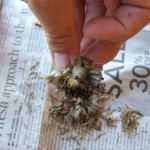 when you are busy collecting. I know of many who put the seeds directly in a labeled envelope or glass jar.
when you are busy collecting. I know of many who put the seeds directly in a labeled envelope or glass jar. - Collect the flower seeds on a warm dry day. Cut the head from the stem and place them in the bucket or envelope.
- Lay them out to dry. Warmth and moisture will ruin your efforts. Lay them out in a dry location and try to separate the seeds from the pod. Some seedsfall away from the pod easily, but with others, you may have to work at for a while.
- Place the dry seeds in an envelope or glass jar. Label with the year collected
and the name of the flower. I love to see how my girls’ handwriting evolves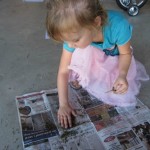 through the year, so I let them do the writing and drawing on the envelopes.
through the year, so I let them do the writing and drawing on the envelopes. - Store in a cool dry place until…spring arrives!
- Plant!! Planting completes the cycle. When spring arrives, I send the girls down to the basement to get the seeds they collected and saved. It is so exciting when those seeds sprout and color our landscape!
For almost guaranteed success, I suggest harvesting from this short list of flowers: zinnia, marigold, cosmos, poppies, sunflowers, daisy type flowers, coreopsis, and echinacea.
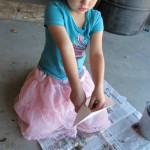
We had a great time collecting our zinnia seeds. I hope you have the time to make this science lesson a memory with your kids.





